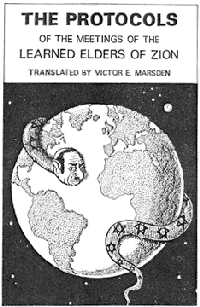PestTrap is both a trap and a pest...
More malicious spyware, also known as malware on t'Interwebs... I usually have McAfee full version installed for firewall protection of my static ADSL connection but failed to renew the license for a few days. Bingo! In the last couple of days my machine has been invaded by at least two serious trojans, one of them hitherto unknown to me, called PestTrap.
 And boy, is this a pest or is it a pest! PestTrap's "demo" installs itself on your machine without invitation or permission and then presents itself as regular spyware. Except... it isn't. PestTrap generates numerous false positives from the status-bar and occasionally brings up a page-size popup, inviting you to buy the full version and "disinfect" your machine. To the right: a reduced screen shot of PestTrap's "console".
And boy, is this a pest or is it a pest! PestTrap's "demo" installs itself on your machine without invitation or permission and then presents itself as regular spyware. Except... it isn't. PestTrap generates numerous false positives from the status-bar and occasionally brings up a page-size popup, inviting you to buy the full version and "disinfect" your machine. To the right: a reduced screen shot of PestTrap's "console".PestTrap looks and sounds convincing and many a computer layman will be tempted (coerced more like) into spending money on this piece of malware. G-d only knows what happens if you buy the full version...
PestTrap has a website of course: PestTrap.com. It suggests removing the software by means of the usual procedure (via Command Center > Add/Remove software) but malicious as this piece of vermin is, that is not possible. PestTrap keeps itself open all the time and an open application can not be uninstalled by the usual procedure. PestTrap.com also has an email operated "help-line": needless to say, don't hand your email address to these criminals...
And so, after a frustrating (a euphemism in this case, trust me) couple of hours; I had no choice but to call for help by searching Google for PestTrap removal guidelines. There's a host of information on that subject and I chose this page. I downloaded the demo of PC Tools Spy Doctor, ran the scan and eventually had no choice but to purchase the full license. It did the trick all right. One can't help thinking cui bono? Who benefits from these malwares?
Well, whoever it is, they are criminals. When will something be done about these thieves and saboteurs who cause millions to lose valuable time and money trying to get rid of the results of their criminal activity?












 Pope Benedict XVI's recent trip to Brazil seems to have done little to shore up the Catholic Church's declining power in its Latin American heartland. It went a long way, however, towards confirming Benedict's reputation as a reactionary bigot.
Pope Benedict XVI's recent trip to Brazil seems to have done little to shore up the Catholic Church's declining power in its Latin American heartland. It went a long way, however, towards confirming Benedict's reputation as a reactionary bigot. Cannes is smacking its lips in anticipation of filmmaker and provocateur Michael Moore's latest jeremiad against the US administration, which receives its premiere at the film festival today. Sicko, a documentary tackling the state of American healthcare, focuses on the pharmaceutical giants, and particularly on health insurers.
Cannes is smacking its lips in anticipation of filmmaker and provocateur Michael Moore's latest jeremiad against the US administration, which receives its premiere at the film festival today. Sicko, a documentary tackling the state of American healthcare, focuses on the pharmaceutical giants, and particularly on health insurers. The US is arming Fatah in the hope of defeating Hamas. Meanwhile, everyone suffers.
The US is arming Fatah in the hope of defeating Hamas. Meanwhile, everyone suffers.  In memory of Jerry Falwell, what to say? The good news is he hasn't gone to Heaven, the bad news is that he hasn't gone to Hell...
In memory of Jerry Falwell, what to say? The good news is he hasn't gone to Heaven, the bad news is that he hasn't gone to Hell... Wednesday's instalment of Nightline (ABC) marked the first "Nightline Face-Off," in which, according to a press release, "hot topics get discussed among prominent voices in their field." This inaugural segment also came billed as the first network-news debate about the existence of God. If He does exist and is just, it will be the last.
Wednesday's instalment of Nightline (ABC) marked the first "Nightline Face-Off," in which, according to a press release, "hot topics get discussed among prominent voices in their field." This inaugural segment also came billed as the first network-news debate about the existence of God. If He does exist and is just, it will be the last. Sarkozy's popularity has just gotten a firm boost. The French economy, suffocated by Bill-O's bumper sticker campaign calling for a boycott of France, can breathe again, as American French wine aficionados, snail guzzlers and other lovers of French haute cuisine can now indulge again without feeling unpatriotic, un-American or even feel like traitors. These and other French imports have just restarted to flow liberally to France's renewed ally once again. Vive la France!
Sarkozy's popularity has just gotten a firm boost. The French economy, suffocated by Bill-O's bumper sticker campaign calling for a boycott of France, can breathe again, as American French wine aficionados, snail guzzlers and other lovers of French haute cuisine can now indulge again without feeling unpatriotic, un-American or even feel like traitors. These and other French imports have just restarted to flow liberally to France's renewed ally once again. Vive la France!





